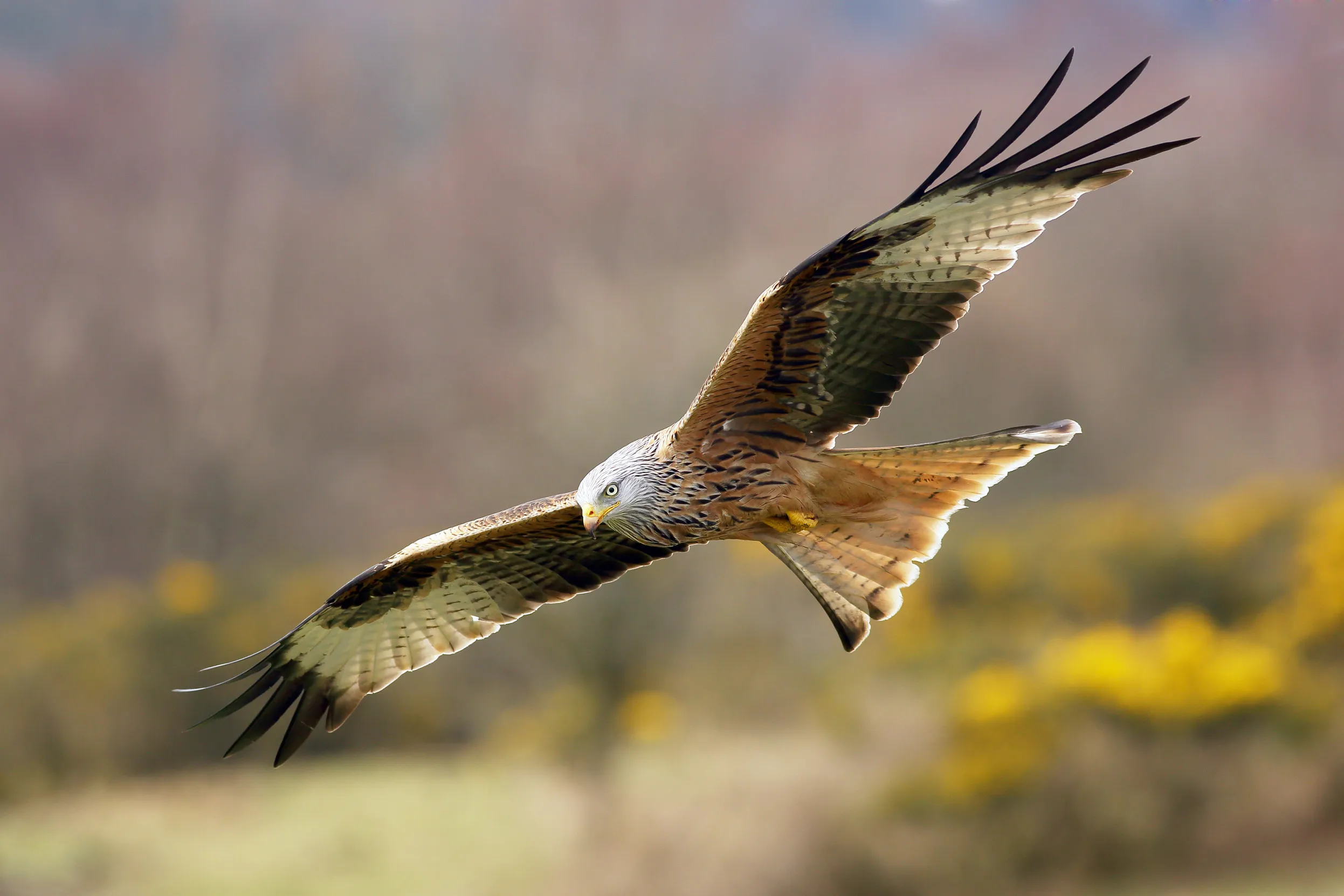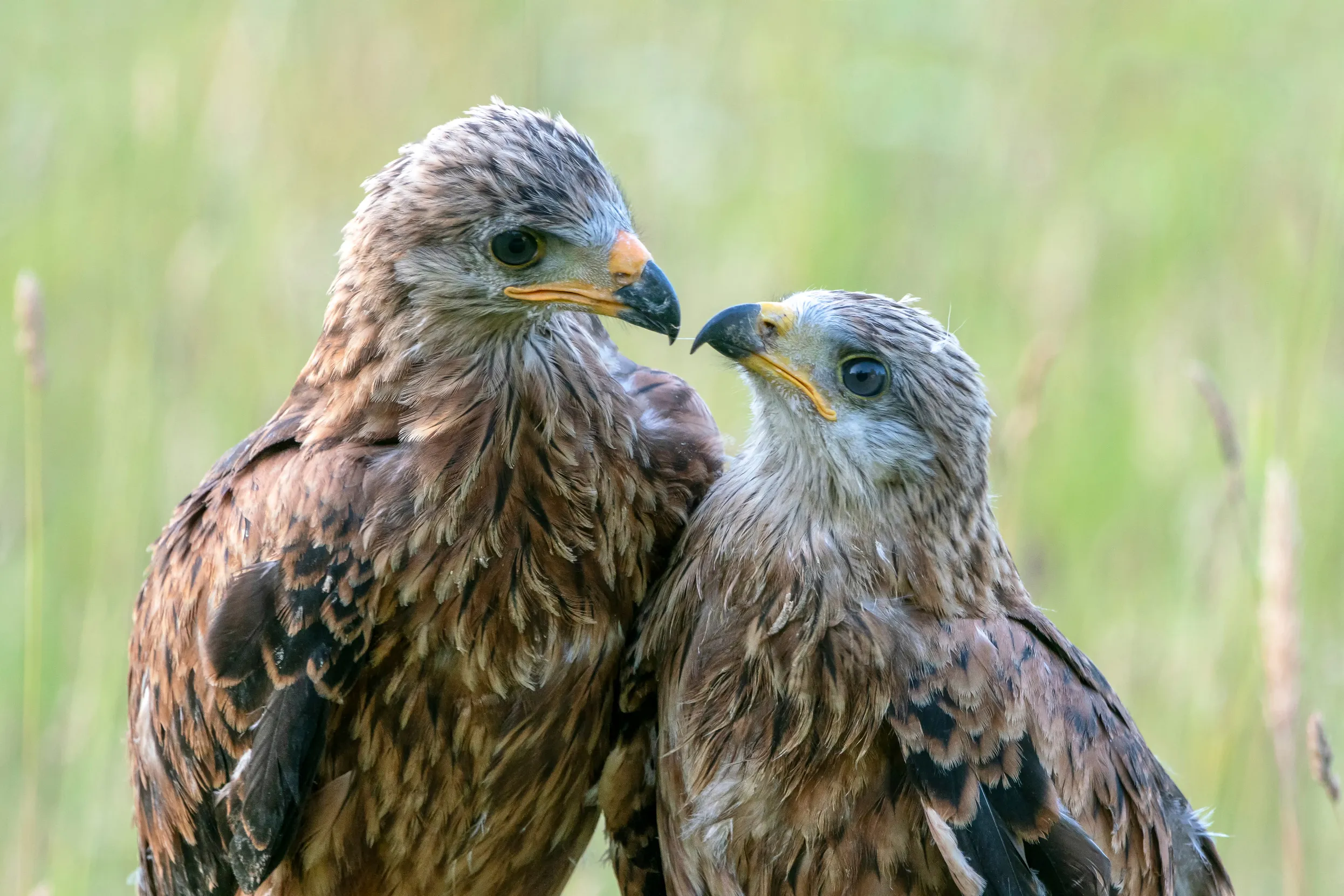News
Celebrate National Tree Week with a look at three remarkable woodland birds
Meet the UK’s mightiest finch, our smallest woodpecker and a beak-snapping flycatcher.
Discover how Red Kites were brought back from the brink of extinction with the help of RSPB members.

Red Kites were once on the brink of extinction from the UK. But, thanks to RSPB members like you, this magnificent bird can now be spotted in many places around these isles. In fact, the UK is now home to around 17% of the entire world population. Let’s take a closer look at one of the UK’s most successful conservation stories, made possible thanks to nature lovers like you.
A Red Kite soars silently over the crest of a hill, its forked tail quivering as it adjusts in the breeze. In a moment it’s overhead, its feathers shimmer as they catch the low light of the morning sun. It then turns, effortlessly gliding away, in seconds it’s just a dark V drifting towards a wooded horizon.
Not long ago such an encounter was almost unheard of in the UK. But now Red Kites are back. It’s thought there are around 4,400 breeding pairs, with the population soaring by 2,232% between 1995 and 2022.
The reversal of the Red Kite’s fortunes is remarkable considering how bad things got. Although they were a regular sight in the Middle Ages, even in cities, attitudes changed and Red Kites found themselves branded as vermin. They were relentlessly killed and targeted by egg collectors. Soon their numbers were plummeting.
By the 1870s, they were extinct in Scotland, England and Ireland. In the early 1900s, only about five breeding pairs were clinging on in Wales, hidden away in the remote hills. Genetic fingerprinting later showed that these birds could all be traced back to a single female – bad news for the genetic diversity of the population.

Thanks to conservation efforts involving the RSPB, volunteers and local farmers – including nest protection schemes – the Welsh population began to partially recover. However, numbers remained low. By the early 1980s there were still only around 50 breeding pairs, confined to west Wales. With the remaining population so fragile and natural population growth looking unlikely, it was clear more action was needed.
In 1989, the RSPB joined forces with the Nature Conservancy Council (now Natural England and Scottish Natural Heritage) to begin the first Red Kite re-introduction programme. Between 1989 and 1994, young birds were taken from nests in Sweden, Spain and Wales, reared and then released on the Black Isle, near Inverness in Scotland and in the Chiltern Hills, between London and Oxford in England. Breeding was recorded at both sites in 1992, and just two years later Red Kites that hatched in the wild raised their own chicks for the first time.
These successes paved the way for more releases in England, Scotland, Northern Ireland and the Republic of Ireland, all with great results. Red Kites were back.

Red Kites still face many challenges in the UK, with illegal persecution stopping them from fully bouncing back in some areas. But their spectacular recovery from just a few birds is clear and inspiring proof that with targeted action, we can turn the fortunes of struggling species around.
The RSPB led on many of the Red Kite introduction programmes, including those in Scotland, Northern Ireland and England. The continued support of our members has been vital to this success. Together you have powered an epic comeback.
Thank you.

Red Kites are just one species now thriving thanks to the work we’re able to do thanks to the support of our members. Your contribution means we’ve been able to help many other species including Avocets, Ospreys, Albatrosses, Cranes, Golden Eagles and even Beavers!
You can find out more about our work to protect species and habitats here.
To spot them, look for long angular wings, a forked tail and russet body.
They have relatively weak talons compared to other birds of prey and prefer to scavenge on carrion and roadkill.
When they do hunt, they will take small animals like voles and rabbits. But they will also eat earthworms!
Have been known to steal laundry for their nests. In Scotland, an opportunistic Red Kite even lined its nest with underwear that had been left on a bank by skinny-dippers.